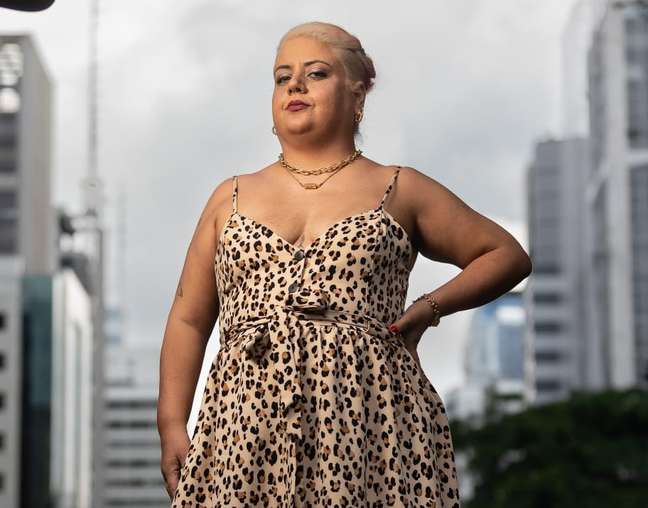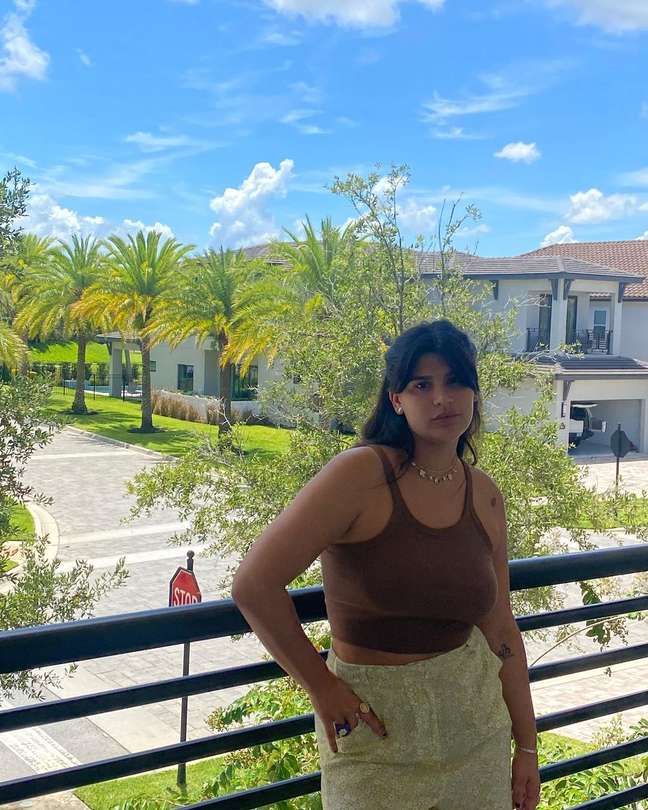This decrease is not just an impression, it can be strategic to increase sales and the effects on consumers are very real.

Recently, the actress Giulia Costadaughter of Flavia Alessandra, he used Instagram to let off steam. The 22-year-old revealed that she doesn’t feel comfortable walking into a locker room, which is cause for concern for her. Giulia also said that the pieces in the shops “seem smaller and smaller” and, moreover, she is in a phase of low self-esteem.
“It seems like the shapes of the clothes are getting smaller and more uncertain. I hate that feeling,” she said. And she is not alone in this and this practice also has a name: “vanity sizing”, which from English can be translated as “vanity size”.
“This happens when the mannequin shown on the label is smaller than the real one so that consumers ‘feel leaner’. As if wearing larger sizes were something discrediting, ”explains entrepreneur and activist Flávia Durante, who created” Pop Plus “, one of the largest trade shows aimed at the plus size market in Latin America.
Fashion consultant Cáren Cruz has already experienced this phenomenon firsthand. “I wear M, or 40, and in some stores I don’t even dress in 42 or 44, or size L. It’s totally out of proportion,” she says.

Flávia states that the practice directly affects the consumer, especially if it is a woman. “(The woman) always feels out of step. She is never satisfied with her body, she always feels bigger than her, she never finds the right size clothes ”.
Psychologist and style consultant Prigioni Kythera says that, sadly, fashion hasn’t separated itself from the culture of thinness. “As the plus size market is growing, most brands still can’t cater to the fat audience,” she says.
According to Prirla, when a brand cuts down on clothes, where a size 40 fits someone wearing 38, they want to give the impression that they fit the larger sizes, without having to.
She reports that most people who hire the services of a style consultant do so because of the clothes shopping and research phase. The complaints are numerous: they do not know of shops that cater to different body types, they feel uncomfortable trying on too many clothes and even declare themselves embarrassed by the sellers because of their body.
“I have received more than one report of women being abused by vendors for their bodies. I’ve seen a client of mine feel sad because in the same shop she doesn’t look good with a size M garment and she looks good with a P garment, ”says Prissioni.
Not feeling covered by the available sizes is no longer a problem reserved only for fat people.
“When I created ‘Pop Plus’ the goal was to reach the fat audience, people who dress over 46 and 48. What happened is that women who dress under that size have started not to feel contemplated in the conventional fashion market. The plus size market had to start shrinking the net to reach these women, ”says entrepreneur Flávia.
Is there no standard for clothing size?
Only in December 2021 did the Brazilian Association of Technical Standards (ABNT) publish a new standard in its catalog to define the size of women’s clothing, including the dimensions in centimeters of each garment and not just by number or letter.
The publication of the standard is the result of an extensive study conducted by ABNT’s Brazilian Textile and Clothing Committee with industry representatives such as Senai Cetiqt, pattern makers, entities such as the Brazilian Plus Size Association (ABPS) and retailers Chains. But there is a problem: the rule is not mandatory.
“Nobody will pay a fine if they don’t respect the new hours,” explains stylist and writer of fashion books Salma Soria. According to entrepreneur Flávia During the inclusion of the larger size in this standardization, it was the result of a struggle between entities in the plus size industry.
If bodies alone are plural, this is even stronger in our country and in the diversity of the people who inhabit it.
“We are extremely different, we don’t have a Brazilian face, we have a Brazilian body, a body that has many differences in its structure, the result of a misgenation,” says Salma.
“I find it very difficult to standardize a table for Brazilian bodies, but it has to have a starting point, especially for brands that are just starting, as design faculties don’t teach how to work with larger bodies,” says Flávia.
“We are extremely different, we don’t have a Brazilian face, we have a Brazilian body, a body that has many differences in its structure, the result of a misgenation,” says Salma.
Stylist Salma believes there are advantages when it comes to creating a model, especially when it comes to large-scale clothing production. Fashion consultant Cáren Cruz claims that the clothes are presented in centimeters, about the same as in online stores.
“Inches that refer to the hips, waist, shoulders and other parts of the body. In this way, whoever buys it will be able to know if that piece fits that body or not ”, he defends himself.
Psychologist and style consultant Priscilla Kythera hopes for a standard that fits a wide variety of bodies. “I hope to still be able to work as a style consultant to be able to experience it in practice,” she concludes.
Source: Terra
Benjamin Smith is a fashion journalist and author at Gossipify, known for his coverage of the latest fashion trends and industry insights. He writes about clothing, shoes, accessories, and runway shows, providing in-depth analysis and unique perspectives. He’s respected for his ability to spot emerging designers and trends, and for providing practical fashion advice to readers.







